June 30th – 6 Wochen Türkei (Teil 5) – Region Kara Deniz
-

- Mathias, a Berliner cyclist from Freiburg in Germany pedalling with me together. His Goal: reach New Zealand, (www.projekt-akaroa.de)
-
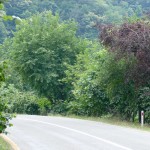
- Oh Lord, have you been here when you designed the paradise? Chestnuts, Plumb-threes, Black-Berries, Red Currants, and many more fruits
-
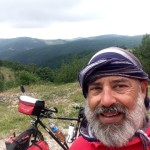
- Crossing the CANIK DAGLARI (Mountain range within the Pontic Mountains) short of the Stau situation.
-
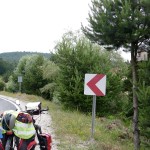
- didi you see the birds house hanging below the tree?? NO, it;s not Switzerland, its not Austria, it’s somewhere along the ROAD 850 between Niksar and Ünye in Turkey.
-
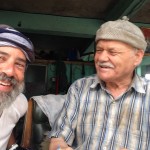
- At Yaliköy, this man is the car mechanic of the village, former taxi driver in Germany (Bremen) and as second occupation, he is the editor of the YALIKÖY NEWSPAPER ( A monthly issue and by the way, he will publish this picture with the foreigner, telling that I get in love in Turkey but I define the turkish behaviour with the environment as a shame.
-
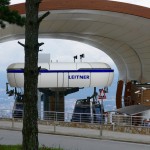
- Leitner Ropes also in Ordu. Boztepe – a hill of 550 m (1,800 ft) overlooking the town from the west. Since June 2012, an aerial lift system provides an easy way of transportation between the city’s coastline and the hilltop. The Ordu Boztepe Gondola can transport hourly 900 passengers up to the hilltop in 6.5 minutes
-
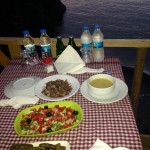
- a classical turkish dinner (lunch) The soup, chillies, tomato and cucumber salad as well a hot dip is usual. Homemade bread, rice and a lamb stew. The classical drink is Ayran, a mixture of Joghurt, Water and Salt, ice-cold served.
-
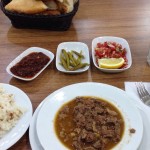
- a classical turkish dinner (lunch) The soup, chillies, tomato and cucumber salad as well a hot dip is usual. Homemade bread, rice and a lamb stew. The classical drink is Ayran, a mixture of Joghurt, Water and Salt, ice-cold served.
-
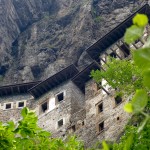
- The entrance to the Monastery leads up a long and narrow stairway. There is a guard-room next to the entrance. The stairs lead down from there to the inner courtyard. On the left, in front of a cave, there are several monastery buildings. The cave, which was converted into a church, constitutes the center of the monastery. The library is to the right.
-
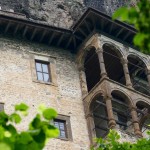
- The entrance to the Monastery leads up a long and narrow stairway. There is a guard-room next to the entrance. The stairs lead down from there to the inner courtyard. On the left, in front of a cave, there are several monastery buildings. The cave, which was converted into a church, constitutes the center of the monastery. The library is to the right.
-
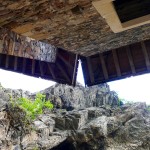
- The entrance to the Monastery leads up a long and narrow stairway. There is a guard-room next to the entrance. The stairs lead down from there to the inner courtyard. On the left, in front of a cave, there are several monastery buildings. The cave, which was converted into a church, constitutes the center of the monastery. The library is to the right.
-
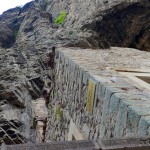
- The entrance to the Monastery leads up a long and narrow stairway. There is a guard-room next to the entrance. The stairs lead down from there to the inner courtyard. On the left, in front of a cave, there are several monastery buildings. The cave, which was converted into a church, constitutes the center of the monastery. The library is to the right.
-
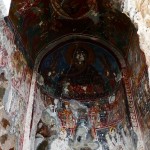
- The inner and outer walls of the Rock Church and the walls of the adjacent chapel are decorated with frescoes. Frescoes dating from the era of Alexios III of Trebizond line the inner wall of the Rock Church facing the courtyard. The frescoes of the chapel which were painted on three levels in three different periods are dated to the beginning of the 18th century. The frescoes of the bottom band are of superior quality.
-
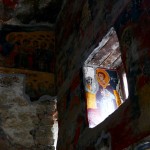
- The inner and outer walls of the Rock Church and the walls of the adjacent chapel are decorated with frescoes. Frescoes dating from the era of Alexios III of Trebizond line the inner wall of the Rock Church facing the courtyard. The frescoes of the chapel which were painted on three levels in three different periods are dated to the beginning of the 18th century. The frescoes of the bottom band are of superior quality.
-
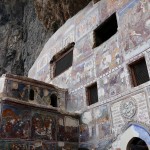
- The inner and outer walls of the Rock Church and the walls of the adjacent chapel are decorated with frescoes. Frescoes dating from the era of Alexios III of Trebizond line the inner wall of the Rock Church facing the courtyard. The frescoes of the chapel which were painted on three levels in three different periods are dated to the beginning of the 18th century. The frescoes of the bottom band are of superior quality.
-
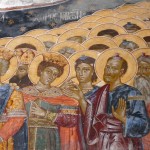
- The main subject of the frescoes are biblical scenes telling the story of Christ and the Virgin Mary.
-
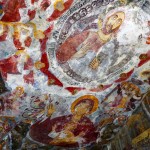
- The main subject of the frescoes are biblical scenes telling the story of Christ and the Virgin Mary.
-
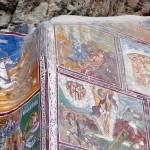
- The inner and outer walls of the Rock Church and the walls of the adjacent chapel are decorated with frescoes. Frescoes dating from the era of Alexios III of Trebizond line the inner wall of the Rock Church facing the courtyard. The frescoes of the chapel which were painted on three levels in three different periods are dated to the beginning of the 18th century. The frescoes of the bottom band are of superior quality.
-
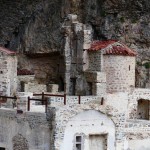
- The large building with a balcony on the front part of the cliff was used for the monks‘ cells and for housing guests. It dates from 1840.
-
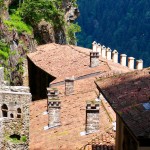
- The large building with a balcony on the front part of the cliff was used for the monks‘ cells and for housing guests. It dates from 1840.
-
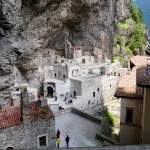
- The principal elements of the Monastery complex are the Rock Church, several chapels, kitchens, student rooms, a guesthouse, a library, and a sacred spring revered by Eastern Orthodox Christians.
-
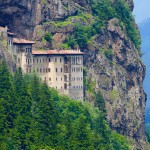
- The monastery was founded in AD 386 during the reign of the Emperor Theodosius I (375 – 395) During its long history, the monastery fell into ruin several times and was restored by various emperors. During the 6th century, it was restored and enlarged by General Belisarius at the behest of Justinian. It reached its present form in the 13th century after gaining prominence during the existence of the Empire of Trebizond. In 1682 and for the following decades, the monastery housed the Phrontisterion of Trapezous, a well-known Greek educational institution of the region.
-
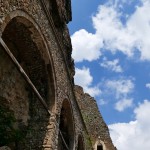
- The large aqueduct at the entrance, which supplied water to the Monastery, is constructed against the side of the cliff. The aqueduct has many arches which have mostly been restored.
-
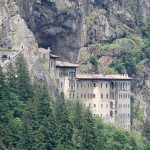
- The Sumela Monastery (Turkish: Sümela Manastırı) is a Greek Orthodox monastery dedicated to the Virgin Mary at Melá Mountain within the Pontic Mountains range, in the Maçka district of Trabzon Province in modern Turkey. Nestled in a steep cliff at an altitude of about 1,200 metres (3,900 ft) facing the Altındere valley, it is a site of great historical and cultural significance, as well as a major tourist attraction within Altındere National Park.
-
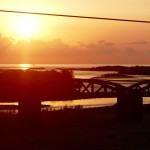
- The Çoruh River (Turkish: Çoruh, Georgian: ჭოროხი ch’orokhi, Greek: Άκαμψις, Akampsis Armenian „Ճորոխ“- (Tchorokh)) rises in the Mescit Mountains in north-eastern Turkey, flows through the cities of Bayburt, Ispir, Yusufeli, and Artvin, along the Kelkit-Çoruh Fault, before flowing into Georgia, where it reaches the Black Sea just south of Batumi and a few kilometers north of the Turkish-Georgian border.
-
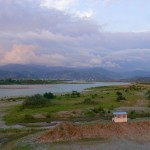
- The Çoruh River (Turkish: Çoruh, Georgian: ჭოროხი ch’orokhi, Greek: Άκαμψις, Akampsis Armenian „Ճորոխ“- (Tchorokh)) rises in the Mescit Mountains in north-eastern Turkey, flows through the cities of Bayburt, Ispir, Yusufeli, and Artvin, along the Kelkit-Çoruh Fault, before flowing into Georgia, where it reaches the Black Sea just south of Batumi and a few kilometers north of the Turkish-Georgian border.
June 30th – 6 Wochen Türkei (Teil 4) – Region Anatolien (Kapadokkien und Pontisches Gebirge)
-
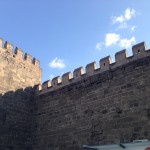
- Kayseri City, a city huge of history and full of architectonical heritage, from the Hittite, The Romans, the Bizantines, the Selcuk Dinasty, the Otoman, and the Republic Era.
-

- Kayseri City, a city huge of history and full of architectonical heritage, from the Hittite, The Romans, the Bizantines, the Selcuk Dinasty, the Otoman, and the Republic Era.
-
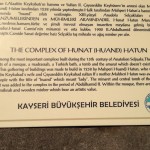
- Kayseri City, a city huge of history and full of architectonical heritage, from the Hittite, The Romans, the Bizantines, the Selcuk Dinasty, the Otoman, and the Republic Era.
-
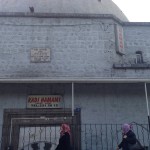
- The Hamam, where I went to have a Steam Bath, a Peeling and a Massage. The first time in Turkey where people try to get a financial advantage because Im a foreigner. They don’t had luck, I was strong enough to handle with them.
-
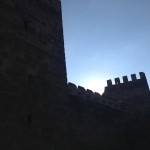
- Kayseri City, a city huge of history and full of architectonical heritage, from the Hittite, The Romans, the Bizantines, the Selcuk Dinasty, the Otoman, and the Republic Era.
-
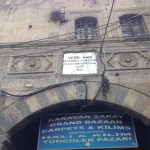
- Kayseri City, a city huge of history and full of architectonical heritage, from the Hittite, The Romans, the Bizantines, the Selcuk Dinasty, the Otoman, and the Republic Era.
-
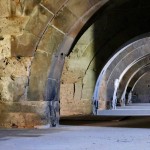
- The interior view of Sultan Han’s Caravanserai. Here the main building where travellers and their animals could rest. It was also a storage room for their goods.
-
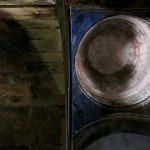
- The interior view of Sultan Han’s Caravanserai. Here the main building where travellers and their animals could rest. It was also a storage room for their goods.
-
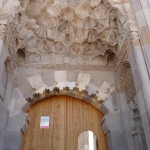
- the Portal of the Sultan Han Caravanserai along the Silk Road in central Anatolia. This Caravanserai is the second largest in todays Turkey territory after the one of Aksaray.
-
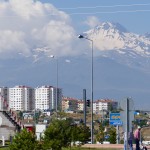
- https://en.wikipedia.org/wiki/Mount_Erciyes Mount Erciyes (3.990 MSL) waches over the city of Kayseri
-
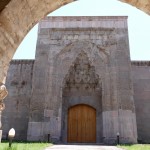
- The Caravanserai from Sultan Han (Seljuk Dynasty) build within 4 years in 1229 AD. A caravanserai (Persian: کاروانسرا) was a roadside inn where travelers could rest and recover from the day’s journey. In the Middle-East, it is often called by its Persian name khan, (خان). Caravanserais supported the flow of commerce, information, and people across the network of trade routes covering Asia, North Africa, and southeastern Europe, especially along the Silk Road.
-
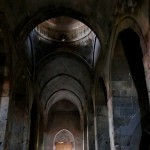
- The interior view of Sultan Han’s Caravanserai. Here the main building where travellers and their animals could rest. It was also a storage room for their goods.
-
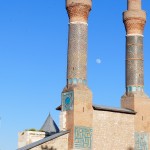
- Madrassah wit twin minarets. Old Town – SIVAS, Anatolia Madrassah’s where / are schools. Pupils studies there Calligraphy, Astronomie, Mathematics, Philosophy and of course religion, Islam, as well.
-
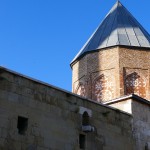
- BURUCIYE MADRASSAH – Old Town – SIVAS, Anatolia Madras’s where / are schools. Pupils studies there Calligraphy, Astronomie, Mathematics, Philosophy and of course religion, Islam, as well.
-
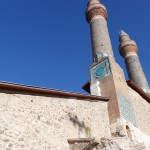
- Madrassah with „Twin MInarats“ build in 1272- Old Town – SIVAS, Anatolia Madras’s where / are schools. Pupils studies there Calligraphy, Astronomie, Mathematics, Philosophy and of course religion, Islam, as well.
-
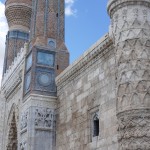
- SKY MADRASSAH – Old Town – SIVAS, Anatolia Build in 1271 is currently being restored and is planned to function as an Seljuk Museum.
-
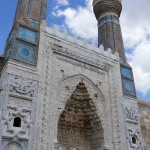
- SKY MADRASSAH – Old Town – SIVAS, Anatolia Build in 1271 is currently being restored and is planned to function as an Seljuk Museum.
-
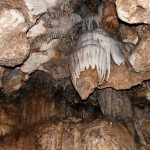
- The „Ballica Cave“ is an 8 km long cave 23 km far from Tokat, in Pazar. It is made up of crystallised karstic stone that contain 96% calcium carbonate. It is a fossil cave that developed vertically and horizontally. It has five storeys connected to each thereby stalagmites, stalactites, travertine, onion stalactites, dripstone pools and various caves formations.
-
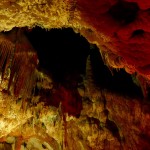
- The „Ballica Cave“ is an 8 km long cave 23 km far from Tokat, in Pazar. It is made up of crystallised karstic stone that contain 96% calcium carbonate. It is a fossil cave that developed vertically and horizontally. It has five storeys connected to each thereby stalagmites, stalactites, travertine, onion stalactites, dripstone pools and various caves formations.
-
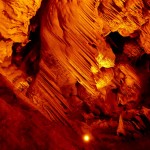
- The „Ballica Cave“ is an 8 km long cave 23 km far from Tokat, in Pazar. It is made up of crystallised karstic stone that contain 96% calcium carbonate. It is a fossil cave that developed vertically and horizontally. It has five storeys connected to each thereby stalagmites, stalactites, travertine, onion stalactites, dripstone pools and various caves formations.
-
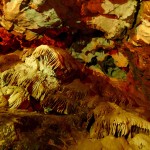
- The „Ballica Cave“ is an 8 km long cave 23 km far from Tokat, in Pazar. It is made up of crystallised karstic stone that contain 96% calcium carbonate. It is a fossil cave that developed vertically and horizontally. It has five storeys connected to each thereby stalagmites, stalactites, travertine, onion stalactites, dripstone pools and various caves formations.
-
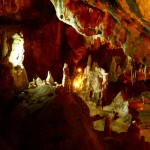
- The „Ballica Cave“ is an 8 km long cave 23 km far from Tokat, in Pazar. It is made up of crystallised karstic stone that contain 96% calcium carbonate. It is a fossil cave that developed vertically and horizontally. It has five storeys connected to each thereby stalagmites, stalactites, travertine, onion stalactites, dripstone pools and various caves formations.
-
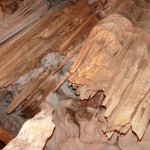
- The „Ballica Cave“ is an 8 km long cave 23 km far from Tokat, in Pazar. It is made up of crystallised karstic stone that contain 96% calcium carbonate. It is a fossil cave that developed vertically and horizontally. It has five storeys connected to each thereby stalagmites, stalactites, travertine, onion stalactites, dripstone pools and various caves formations.
-
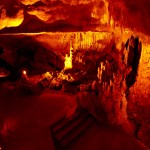
- The „Ballica Cave“ is an 8 km long cave 23 km far from Tokat, in Pazar. It is made up of crystallised karstic stone that contain 96% calcium carbonate. It is a fossil cave that developed vertically and horizontally. It has five storeys connected to each thereby stalagmites, stalactites, travertine, onion stalactites, dripstone pools and various caves formations.
-
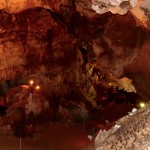
- The „Ballica Cave“ is an 8 km long cave 23 km far from Tokat, in Pazar. It is made up of crystallised karstic stone that contain 96% calcium carbonate. It is a fossil cave that developed vertically and horizontally. It has five storeys connected to each thereby stalagmites, stalactites, travertine, onion stalactites, dripstone pools and various caves formations.
-
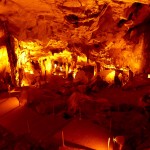
- The „Ballica Cave“ is an 8 km long cave 23 km far from Tokat, in Pazar. It is made up of crystallised karstic stone that contain 96% calcium carbonate. It is a fossil cave that developed vertically and horizontally. It has five storeys connected to each thereby stalagmites, stalactites, travertine, onion stalactites, dripstone pools and various caves formations.
-
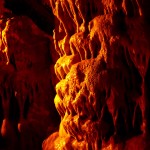
- The „Ballica Cave“ is an 8 km long cave 23 km far from Tokat, in Pazar. It is made up of crystallised karstic stone that contain 96% calcium carbonate. It is a fossil cave that developed vertically and horizontally. It has five storeys connected to each thereby stalagmites, stalactites, travertine, onion stalactites, dripstone pools and various caves formations.
-
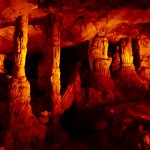
- The „Ballica Cave“ is an 8 km long cave 23 km far from Tokat, in Pazar. It is made up of crystallised karstic stone that contain 96% calcium carbonate. It is a fossil cave that developed vertically and horizontally. It has five storeys connected to each thereby stalagmites, stalactites, travertine, onion stalactites, dripstone pools and various caves formations.
-
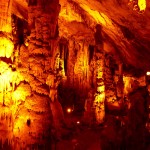
- The „Ballica Cave“ is an 8 km long cave 23 km far from Tokat, in Pazar. It is made up of crystallised karstic stone that contain 96% calcium carbonate. It is a fossil cave that developed vertically and horizontally. It has five storeys connected to each thereby stalagmites, stalactites, travertine, onion stalactites, dripstone pools and various caves formations.
-
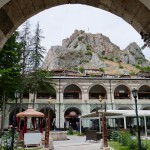
- The Stone Inn, „VOYVODA INN“ – Tasha, one of the biggest inn’s in Anatolia, build by the Ottoman in the early 17th century.
-
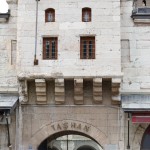
- The Stone Inn, „VOYVODA INN“ – Tasha, one of the biggest inn’s in Anatolia, build by the Ottoman in the early 17th century.
-
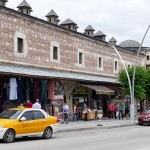
- The Stone Inn, „VOYVODA INN“ – Tasha, one of the biggest inn’s in Anatolia, build by the Ottoman in the early 17th century.
-
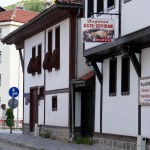
- Niksar has been ruled by the Hittite, Persian, Greek, Pontic, Roman, Byzantine, Danishmend, Seljuk and Ottoman Empires. It has always been an important place in Anatolia because of its location, climate and productive lands. It was known as Cabira in the Hellenistic period (Κάβειρα in Greek). It was one of the favourite residences of Mithridates the Great, who built a palace there, and later of King Polemon I and his successors.
-
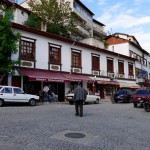
- Niksar has been ruled by the Hittite, Persian, Greek, Pontic, Roman, Byzantine, Danishmend, Seljuk and Ottoman Empires. It has always been an important place in Anatolia because of its location, climate and productive lands. It was known as Cabira in the Hellenistic period (Κάβειρα in Greek). It was one of the favourite residences of Mithridates the Great, who built a palace there, and later of King Polemon I and his successors.
-
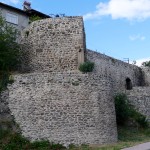
- Niksar has been ruled by the Hittite, Persian, Greek, Pontic, Roman, Byzantine, Danishmend, Seljuk and Ottoman Empires. It has always been an important place in Anatolia because of its location, climate and productive lands. It was known as Cabira in the Hellenistic period (Κάβειρα in Greek). It was one of the favourite residences of Mithridates the Great, who built a palace there, and later of King Polemon I and his successors.
-
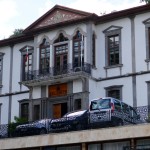
- Niksar has been ruled by the Hittite, Persian, Greek, Pontic, Roman, Byzantine, Danishmend, Seljuk and Ottoman Empires. It has always been an important place in Anatolia because of its location, climate and productive lands. It was known as Cabira in the Hellenistic period (Κάβειρα in Greek). It was one of the favourite residences of Mithridates the Great, who built a palace there, and later of King Polemon I and his successors.
-
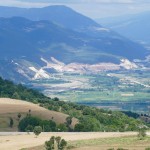
- The Canik Mountains are to the north, Dönek Mountain to the south, and the Niksar Lowland is situated between these mountains. The Niksar Lowland is one of the most important lowlands of the Black Sea Region. VIEW heading South direction Erzincan / Erzurum
-
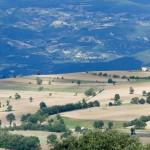
- Niksar lands are irrigated by large and small tributaries of the Kelkit River. Forests cover 53% of the plateau, and pasture 12%; 32% of the land is devoted to agriculture, and only 3% is unsuitable for farming
-
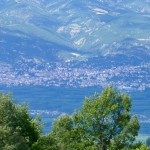
- Niksar has been ruled by the Hittite, Persian, Greek, Pontic, Roman, Byzantine, Danishmend, Seljuk and Ottoman Empires. It has always been an important place in Anatolia because of its location, climate and productive lands.
-
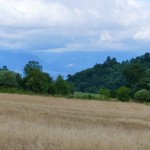
- The Canik Mountains are to the north, Dönek Mountain to the south, and the Niksar Lowland is situated between these mountains. The Niksar Lowland is one of the most important lowlands of the Black Sea Region.
-
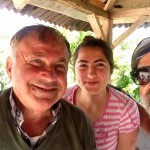
- lovely farmers offered me fresh fruits and a short rest in the shadow along the Road Number 850 between Tokat and Niksar
-
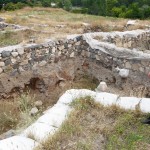
- Pontic Comana, is currently close to the visitor, but Ahmed from the security service was so kind and let me in and told me a lot about this place.
-
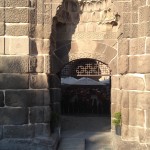
- Kayseri City, a city huge of history and full of architectonical heritage, from the Hittite, The Romans, the Bizantines, the Selcuk Dinasty, the Otoman, and the Republic Era.
June 30th – 6 Wochen Türkei (Teil 3) – Region Anatolien (Kapadokkien)
-
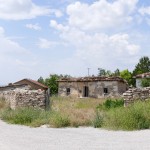
- former kurdish farm house. currently they build everywhere new ones. the region shows a high recent development.
-
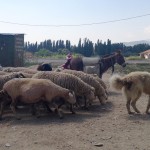
- everyone advised me about the danger of shepherds dogs. they did it so often that im currently a little bit scared about all the stories y heard.
-
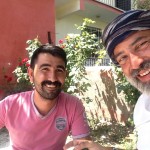
- with Yenal and Sait at Sereflikochisar. Both where extrem kind. Sait owns a little market and he don’t let me pay anything. He ordered as well a lunch for me at a delivery service. It was amazing and had no words for such big gratitude. Yenal also, he went home to take his car and lead me after lunch through the city until a Hotel to rest today. Incredible friendly everyone. Thanks indeed.
-
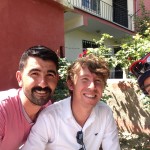
- with Yenal and Sait at Sereflikochisar. Both where extrem kind. Sait owns a little market and he don’t let me pay anything. He ordered as well a lunch for me at a delivery service. It was amazing and had no words for such big gratitude. Yenal also, he went home to take his car and lead me after lunch through the city until a Hotel to rest today. Incredible friendly everyone. Thanks indeed.
-
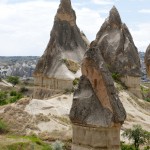
- Cappadocia (Kapadokya) The name, traditionally used in Christian sources throughout history,[citation needed] continues in use as an international tourism concept to define a region of exceptional natural wonders, in particular characterized by fairy chimneys and a unique historical and cultural heritage.
-
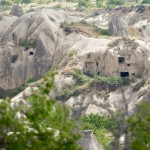
- Cappadocia (Kapadokya) The name, traditionally used in Christian sources throughout history,[citation needed] continues in use as an international tourism concept to define a region of exceptional natural wonders, in particular characterized by fairy chimneys and a unique historical and cultural heritage.
-
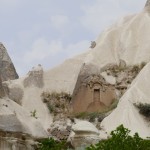
- Cappadocia (Kapadokya) The name, traditionally used in Christian sources throughout history,[citation needed] continues in use as an international tourism concept to define a region of exceptional natural wonders, in particular characterized by fairy chimneys and a unique historical and cultural heritage.
-
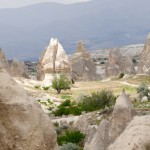
- Cappadocia (Kapadokya) The name, traditionally used in Christian sources throughout history,[citation needed] continues in use as an international tourism concept to define a region of exceptional natural wonders, in particular characterized by fairy chimneys and a unique historical and cultural heritage.
-
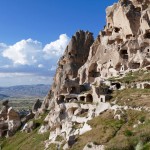
- Cappadocia (Turkish: Kapadokya) is an area in Central Anatolia in Turkey best known for its unique moon-like landscape, underground cities, cave churches and houses carved in the rocks.
-
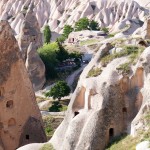
- Cappadocia (Turkish: Kapadokya) is an area in Central Anatolia in Turkey best known for its unique moon-like landscape, underground cities, cave churches and houses carved in the rocks.
-
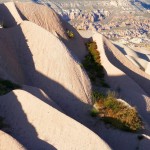
- Cappadocia (Turkish: Kapadokya) is an area in Central Anatolia in Turkey best known for its unique moon-like landscape, underground cities, cave churches and houses carved in the rocks.
-
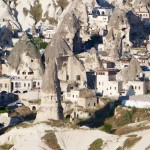
- Cappadocia (Turkish: Kapadokya) is an area in Central Anatolia in Turkey best known for its unique moon-like landscape, underground cities, cave churches and houses carved in the rocks.
-
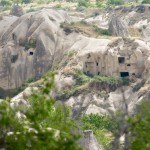
- Cappadocia (Turkish: Kapadokya) is an area in Central Anatolia in Turkey best known for its unique moon-like landscape, underground cities, cave churches and houses carved in the rocks.
-
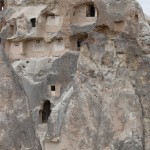
- Cappadocia (Turkish: Kapadokya) is an area in Central Anatolia in Turkey best known for its unique moon-like landscape, underground cities, cave churches and houses carved in the rocks.
-
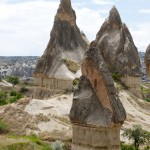
- Cappadocia (Turkish: Kapadokya) is an area in Central Anatolia in Turkey best known for its unique moon-like landscape, underground cities, cave churches and houses carved in the rocks.
-
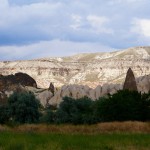
- Cappadocia (Turkish: Kapadokya) is an area in Central Anatolia in Turkey best known for its unique moon-like landscape, underground cities, cave churches and houses carved in the rocks.
-
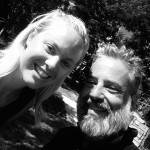
- Another bicycle traveller from Sweden heading China meet at the Camp Site. Ann Johansson. Follow her Blog: www.thethickwhiteline.com
-
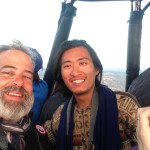
- With Yoyo from Taiwan, we meet the first time yesterday, escaping from a rain shower in the Rose Valley.
June 30th – 6 Wochen Türkei (Teil 2) – Region Anatolien (West)
-
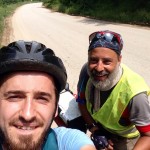
- Mesut, the unknown cyclist riding in opposite direction. We hold just a small talk in german but it was nice.
-
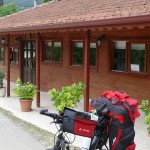
- Aksu Köyü Kadinlari Dayanişma Derneği it’s a cooperative from the woman of the village, managed from themselves.
-

- this exquisite meal was offered to me by the friendly women of Aksu Köyü Kadinlari Dayanişma Derneği
-
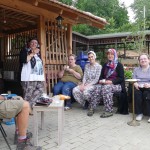
- I was invited by this women to a meal. They managed a cooperative for women of the village baking bread and offering catering, etc
-
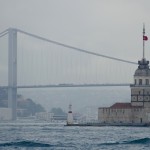
- The Bosphorus Bridge, also called the First Bosphorus Bridge or simply the First Bridge (Turkish: Boğaziçi Köprüsü, 1. Boğaziçi Köprüsü or Birinci Köprü) is one of two suspension bridges spanning the Bosphorus strait (Turkish: Boğaziçi) in Istanbul, Turkey; thus connecting Europe and Asia (the other one is the Fatih Sultan Mehmet Bridge, which is called the Second Bosphorus Bridge.) The bridge is located between Ortaköy (on the European side) and Beylerbeyi (on the Asian side).
-
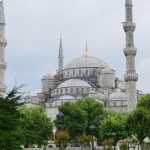
- The Sultan Ahmed Mosque (Turkish: Sultan Ahmet Camii) is a historic mosque in Istanbul. The mosque is popularly known as the Blue Mosque for the blue tiles adorning the walls of its interior. It was built from 1609 to 1616, during the rule of Ahmed I. Its Külliye contains a tomb of the founder, a madrasah and a hospice. The Sultan Ahmed Mosque is still popularly used as a mosque.
-
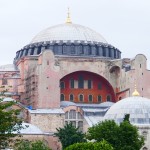
- Hagia Sophia (from the Greek: Ἁγία Σοφία, „Holy Wisdom“; Latin: Sancta Sophia or Sancta Sapientia; Turkish: Ayasofya) is a former Greek Orthodox patriarchal basilica, later an imperial mosque, and now a museum (Ayasofya Müzesi) From the date of its construction in 537 until 1453, it served as an Eastern Orthodox cathedral and seat of the Patriarchate of Constantinople, except between 1204 and 1261, when it was converted to a Roman Catholic cathedral under the Latin Empire. The building was a mosque from 29 May 1453 until 1931. It was then secularized and opened as a museum on 1 February 1935
-
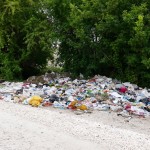
- When Turks finally learn to take care about their country and environment, this day Turkey will turn into a powerful nation again.
-
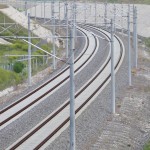
- The Turkish State Railways started building high-speed rail lines in 2003. The first section of the line, between Ankara and Eskişehir, was inaugurated on 13 March 2009. It is a part of the 533 km Istanbul to Ankara high-speed rail line. A subsidiary of Turkish State Railways, Yüksek Hızlı Tren is the sole commercial operator of high speed trains in Turkey.
-
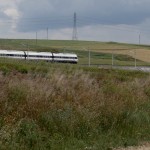
- The Turkish State Railways started building high-speed rail lines in 2003. The first section of the line, between Ankara and Eskişehir, was inaugurated on 13 March 2009. It is a part of the 533 km Istanbul to Ankara high-speed rail line. A subsidiary of Turkish State Railways, Yüksek Hızlı Tren is the sole commercial operator of high speed trains in Turkey.
-
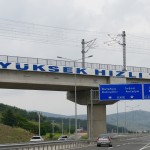
- The Turkish State Railways started building high-speed rail lines in 2003. The first section of the line, between Ankara and Eskişehir, was inaugurated on 13 March 2009. It is a part of the 533 km Istanbul to Ankara high-speed rail line. A subsidiary of Turkish State Railways, Yüksek Hızlı Tren is the sole commercial operator of high speed trains in Turkey.
-
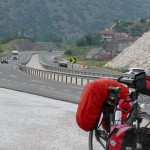
-
the national route between Bilcic and Eskisehir. If this is a national route, I won’t imagine how a highway looks like
-
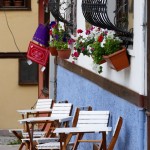
- Old houses in Odunpazarı (literally „wood market“ in Turkish), Oqdunpazari is a metropolitan district of Eskişehir
-
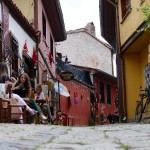
- Old houses in Odunpazarı (literally „wood market“ in Turkish), Oqdunpazari is a metropolitan district of Eskişehir
-
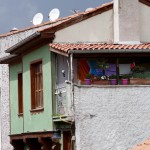
- Old houses in Odunpazarı (literally „wood market“ in Turkish), Oqdunpazari is a metropolitan district of Eskişehir
-
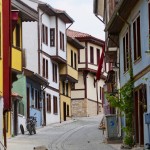
- Old houses in Odunpazarı (literally „wood market“ in Turkish), Oqdunpazari is a metropolitan district of Eskişehir
-
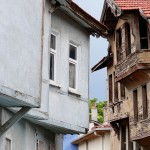
- Old houses in Odunpazarı (literally „wood market“ in Turkish), Oqdunpazari is a metropolitan district of Eskişehir
-
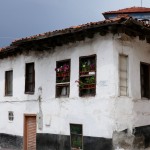
- Old houses in Odunpazarı (literally „wood market“ in Turkish), Oqdunpazari is a metropolitan district of Eskişehir
-
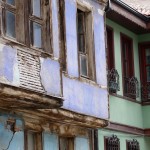
- Old houses in Odunpazarı (literally „wood market“ in Turkish), Oqdunpazari is a metropolitan district of Eskişehir
June 30th – 6 Wochen Türkei (Teil 1) – Region Marmara
-
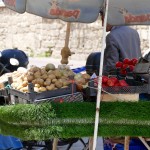
- fresh vegetables from the courtyard, since 5th century b.c. don’t need expensive „bio“ and „eco“ labels.
-
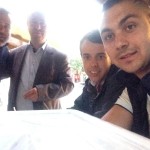
- The older man (even if younger than me) was the manager of a dining area / patio, and offered me an Ayran and Köfte and it was impossible for me to pay anything. The Turkish hospitality is indescribable. If you don’t experience it, you won’t believe it.
-
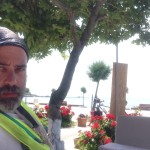
- Silivri. Yes, well I mean NO! I was absolutely not motivated to bike today. It was late, hot, and I was tired.
-

- After totally 1190 meter climbs, 100 km, i finally arrived to Eminönü in Istanbul. Yilmaz, a cyclist from Istanbul lead me safe through the city and traffic until the ferry boat. Thank you Yilmaz
May 31st – Black Sea – Romania and Bulgaria
-
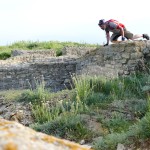
- Estudio empírico de las ruinas. Orgami / ARGAMUM, una Polis griega del siglo VII AC, luego un fuerte Romano (SIGLO VII DC)
-
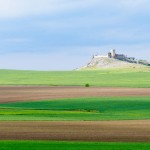
- Enisala Fortress, Dated to the late 13th or the beginning of the 14th century, it was built to control the travel routes that passed through the region. attribute it either to the Genoese, who held several trading posts in the area, or to the Byzantines, who intermittently controlled the region.
-
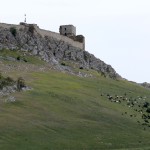
- Enisala Fortress, Dated to the late 13th or the beginning of the 14th century, it was built to control the travel routes that passed through the region. attribute it either to the Genoese, who held several trading posts in the area, or to the Byzantines, who intermittently controlled the region.
-
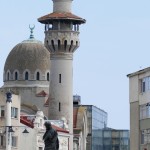
- Constanta, the Mosque from 1910 build by King Carol I dedicated to the muslims in the city. Piata Ovidiu and his Monument
-
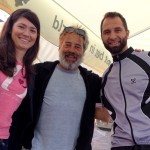
- Daniel, the inspired Romanian _Spanish cyclist and my tour guide in Constanta and his lovely sister. (sorry forgot the name)
-
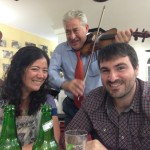
-
Natalia, the mosquito and Nicola (both where my lovely hosts in this city) in an excellent* restaurant in Constanta
-
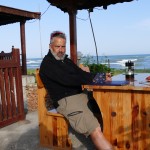
- For the first time, really pissed off with the worst waitress ever. (Camping Cosmos, Shabla, Bulgaria)
-
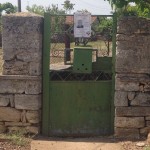
- everywhere obituaries. I feel that 40% of the households in Sabsha shows obituaries on their frontside.
-
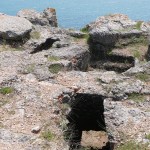
- Over 120 grave constructions were found in the three cemeteries in the Natural Reserve Yaylata; they were cut into the even rocky plateau or in the steep vertical cliffs. Several cave-type tombs were investigated on the southern terrace. They were cut into the base of the rock and consisted of small antechambers leading to rectangular burial chambers. This tombs of the Dobroudja Black Sea coast can be related to the invasion and settlement of barbarian tribes, most probably of Sarmathian origin.
-
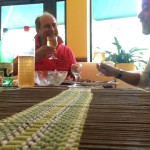
- Having lunch with Viktor, the kind owner from Hostel Casablanca, invited me to taste his own made grappa and white wine.

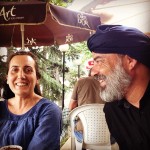
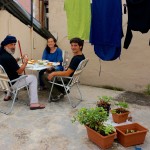
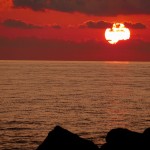
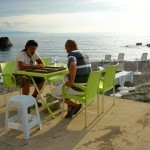
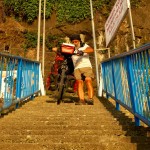
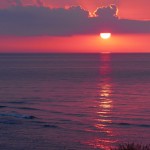
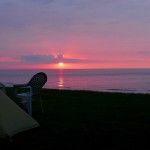
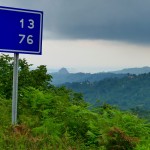
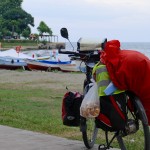
 )
)
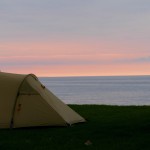
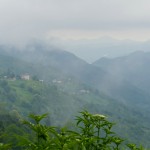
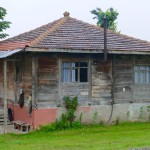
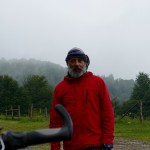
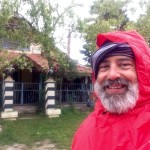
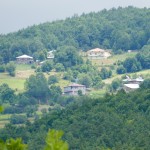
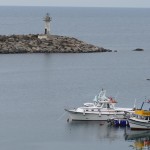

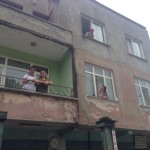
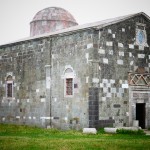
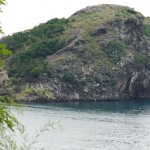
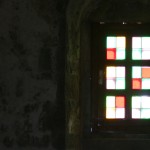
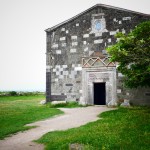
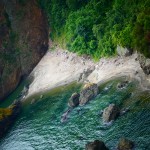
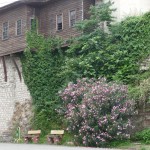
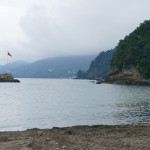
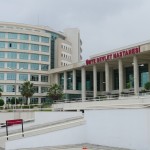
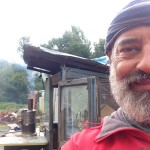
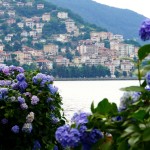
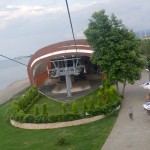
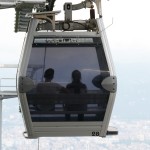
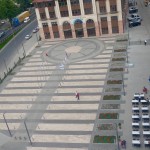
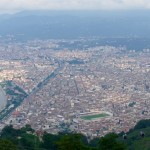
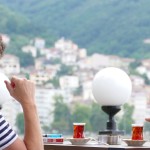
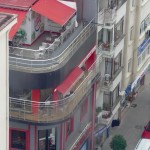
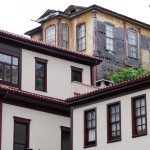
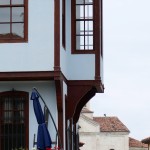
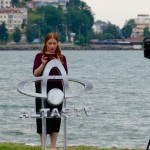
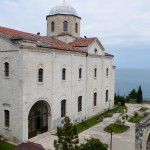
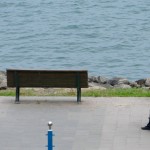
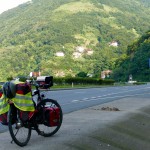
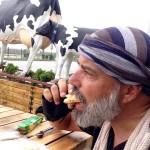
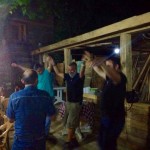
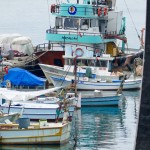
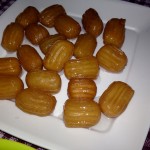
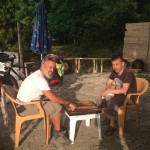
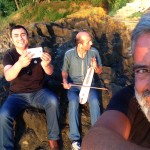
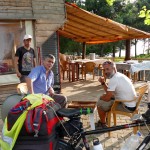
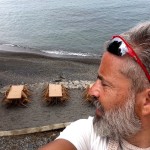
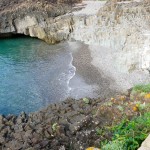
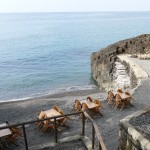
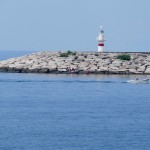
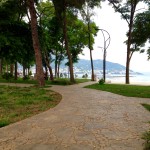
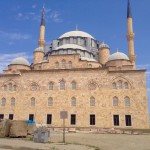
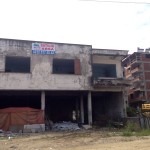
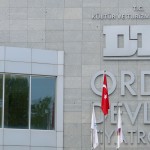
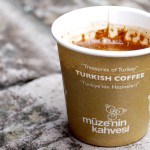
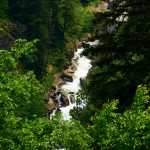
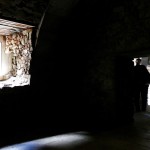
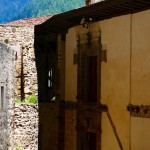
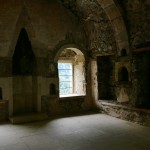
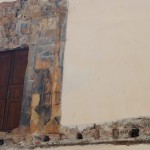
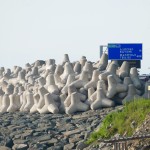
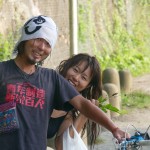
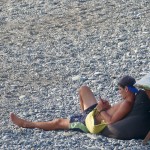
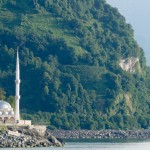
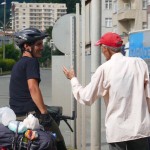
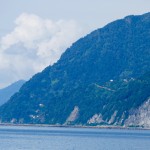
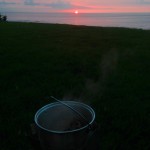
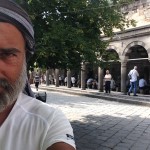
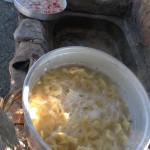
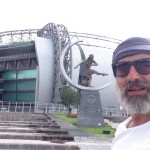
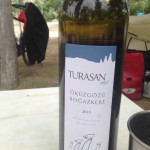
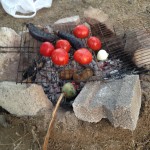
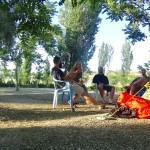
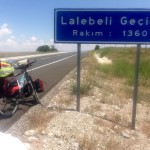
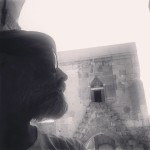
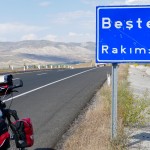
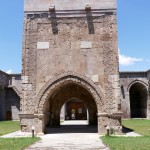
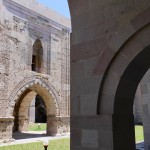
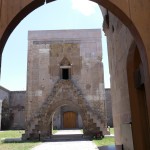
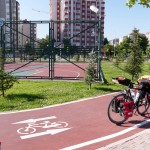
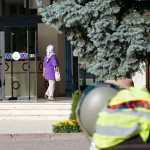
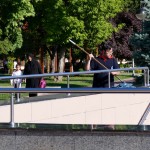
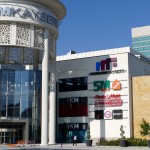
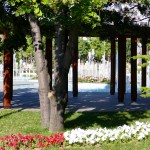
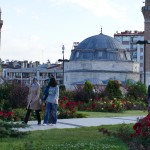
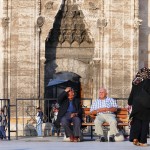
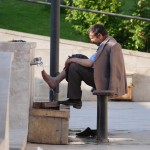
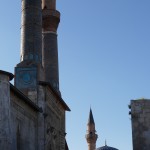
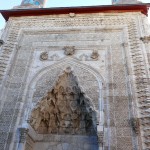
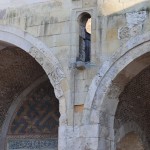
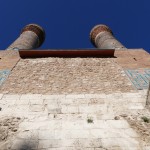
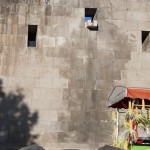
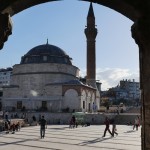
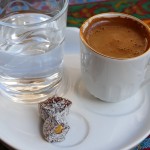
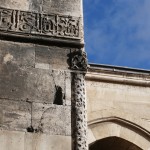
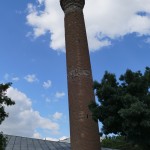
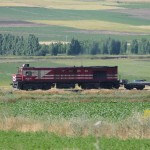
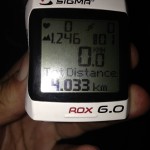

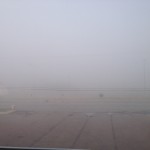
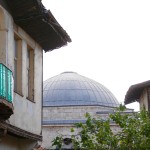
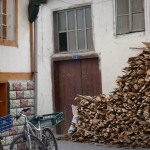
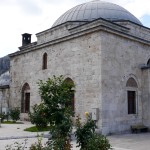
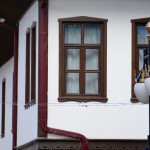
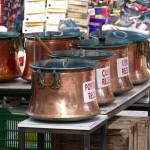
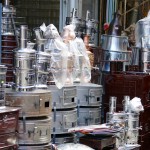
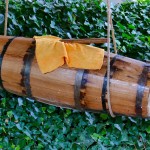
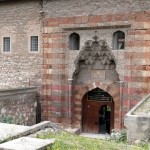
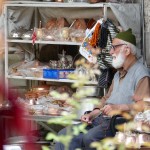
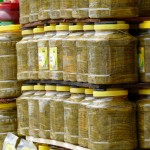
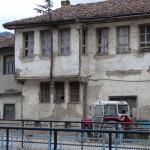
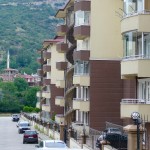
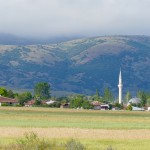
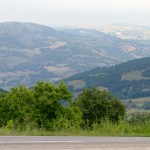
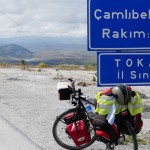
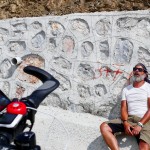
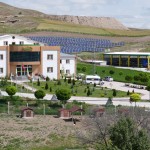
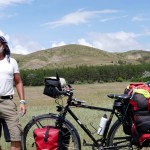
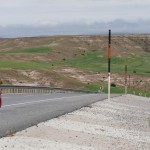
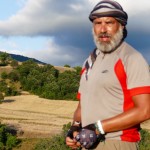
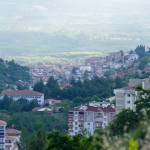
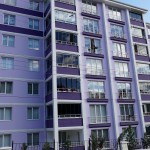
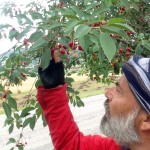
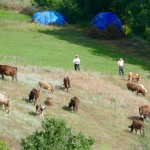
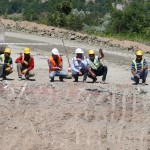
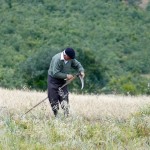
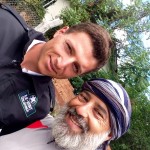
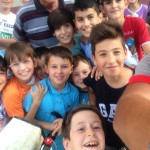
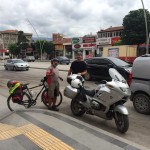
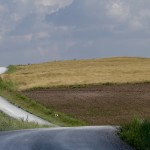
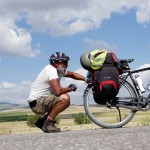
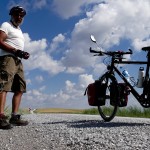
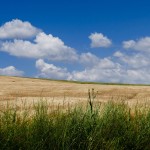
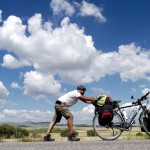
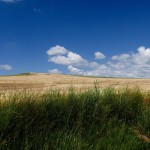
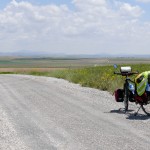
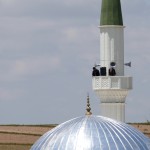
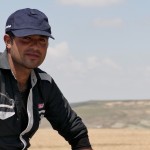
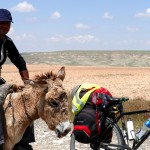
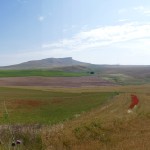
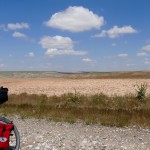
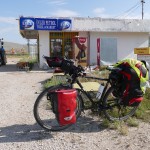
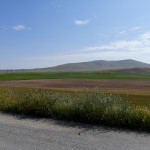
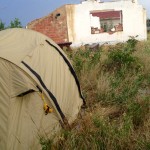
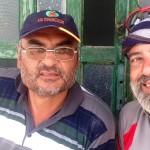
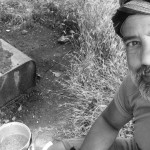
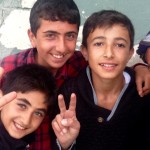
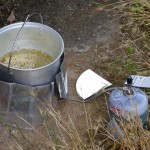
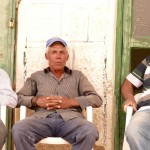
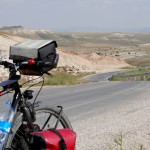
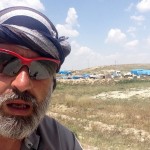
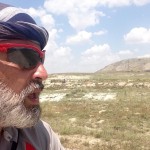
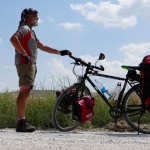
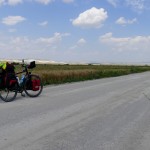
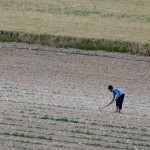
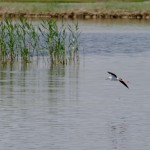
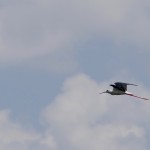
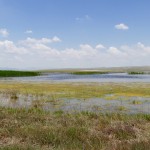
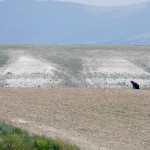
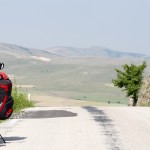
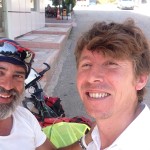
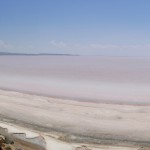
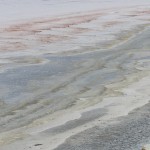
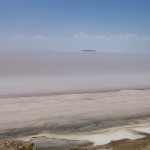
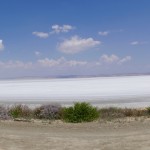
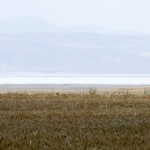
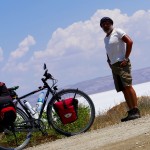
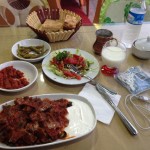
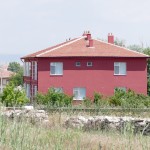
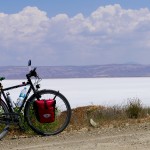
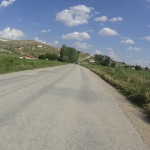
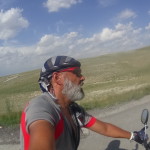
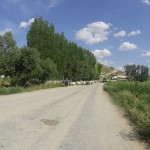
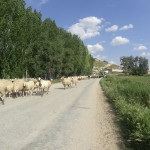

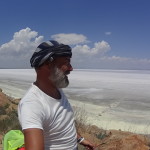
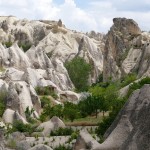
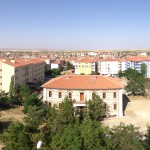
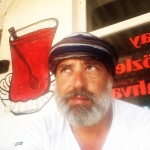
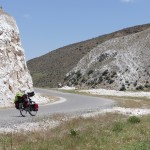
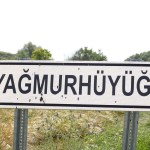
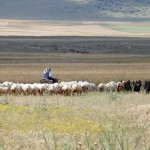
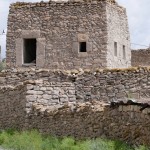
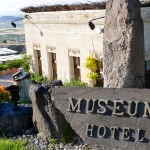
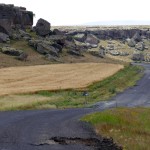
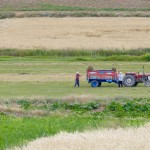
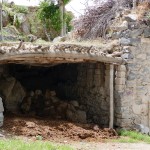
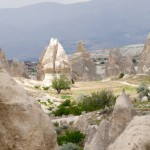
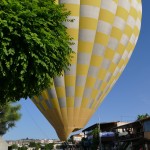
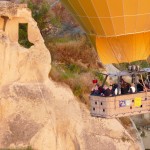
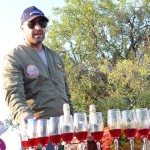
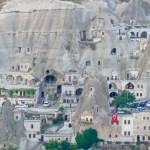
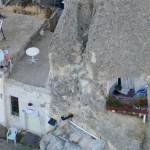
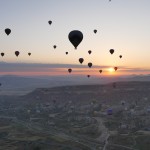
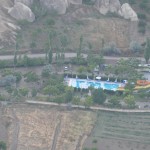
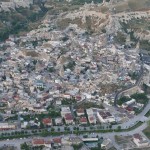
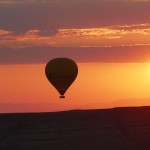
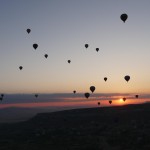
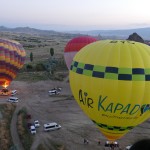
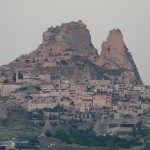
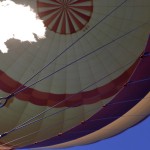
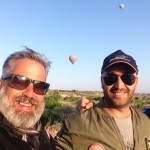
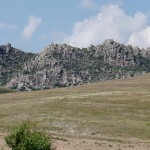
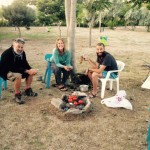
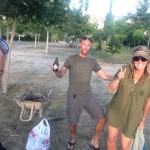

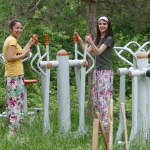
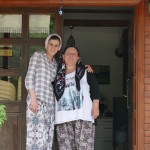
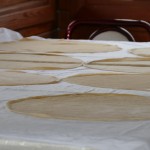
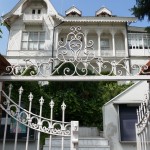
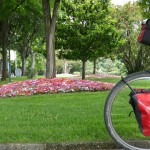
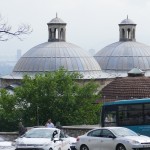
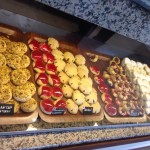
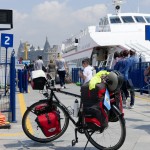
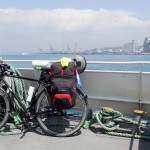
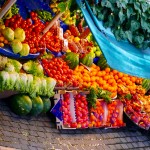

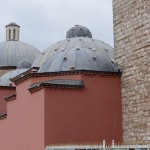
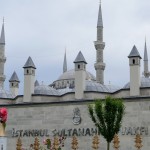
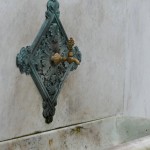
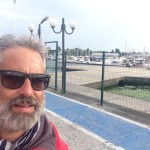
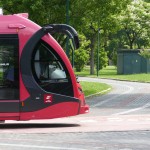
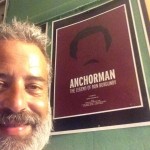
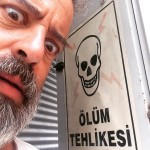
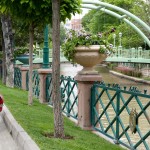
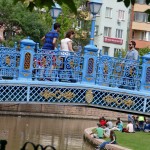
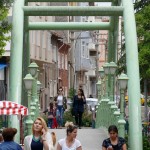
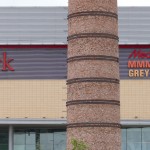
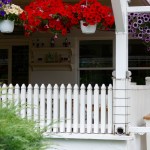
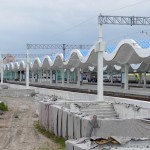
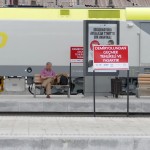
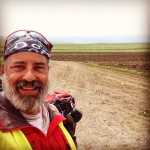
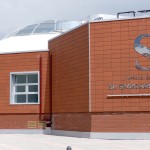
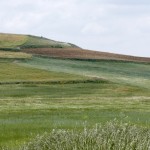
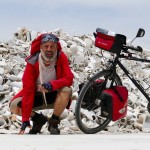
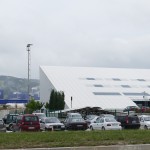
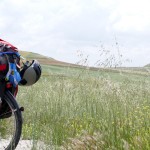
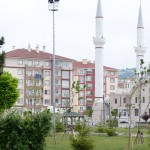
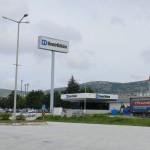
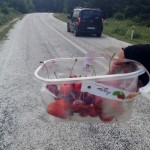
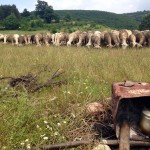
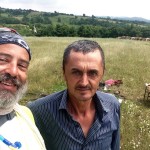
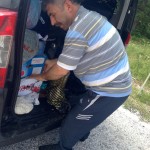
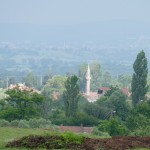
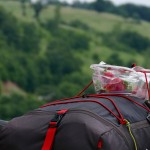
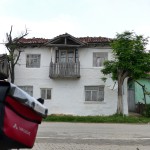
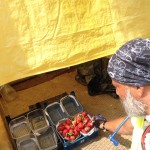
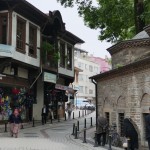
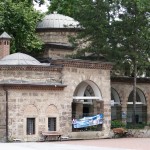
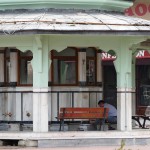
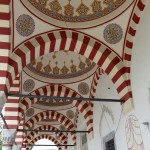
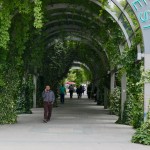
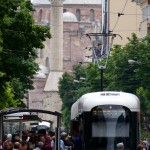
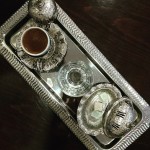
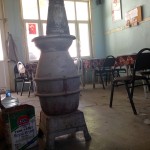
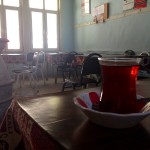
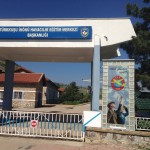

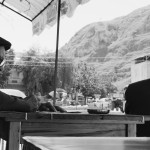
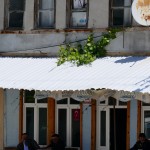
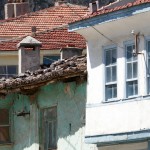
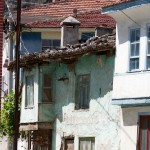
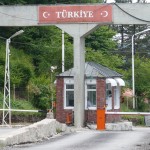
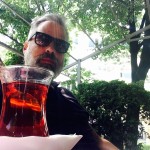
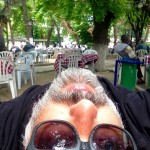
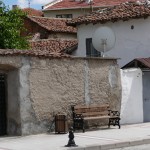
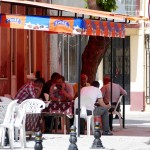
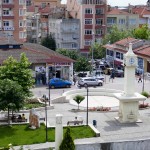
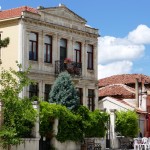
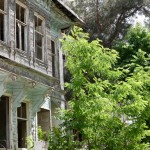
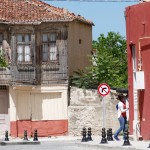
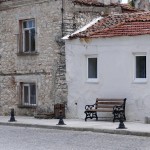
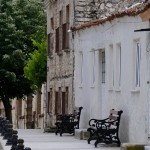
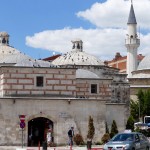
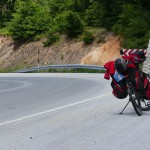
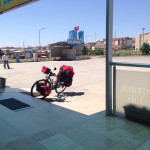
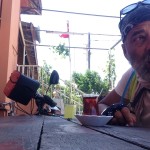
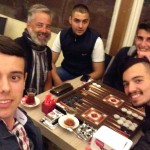
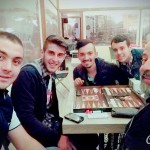
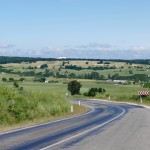
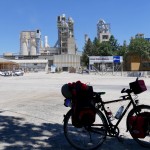
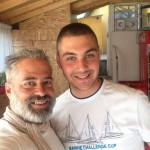
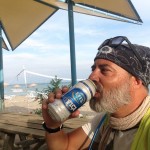
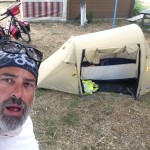
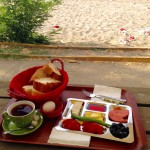
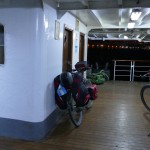
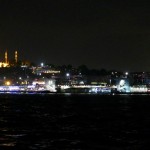
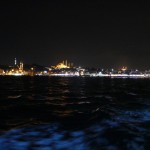
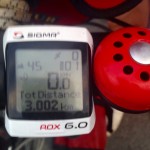
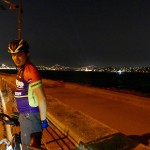
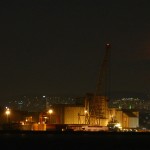
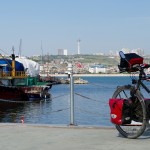
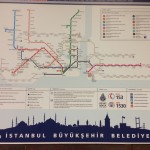
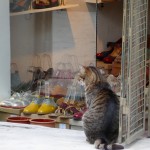
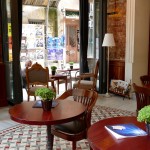
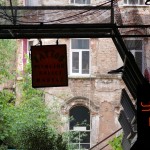
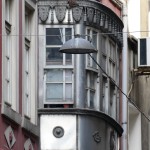
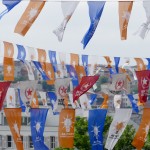
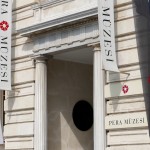
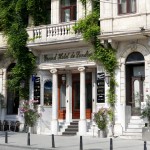
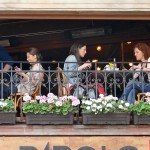
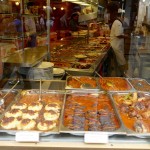
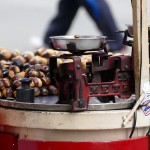
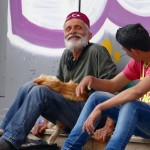
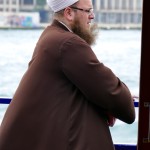
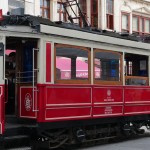
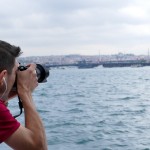
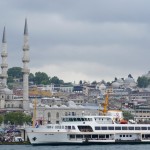
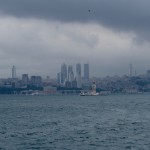
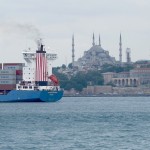
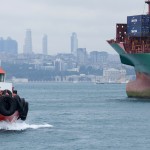
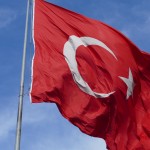
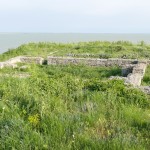
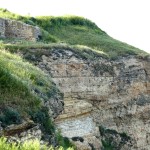
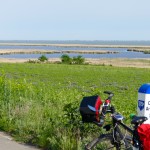
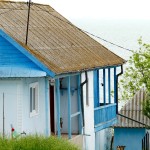
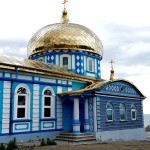
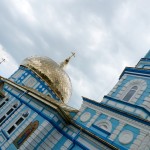

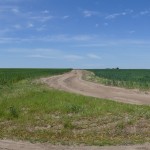
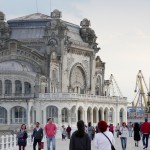
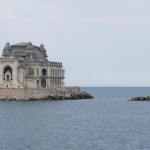

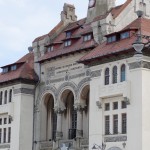
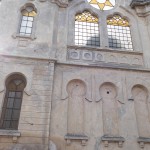
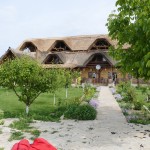
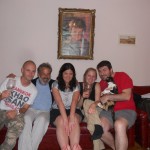
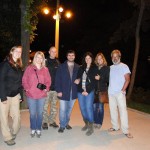
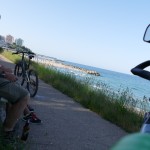
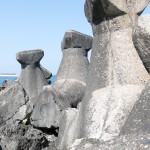
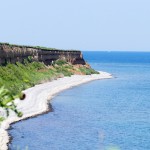
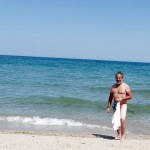
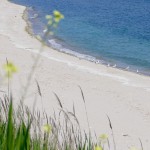
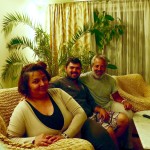
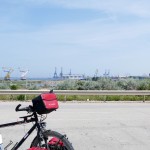
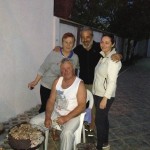
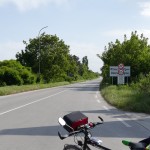
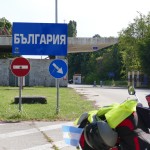
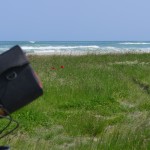
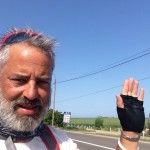
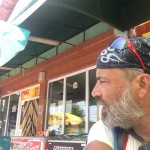
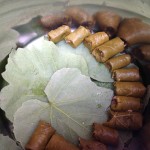
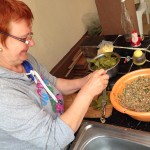
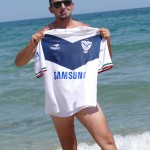
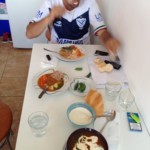
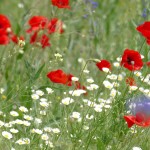
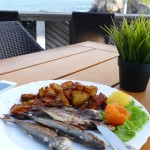
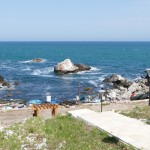
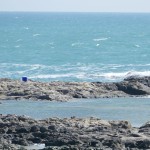
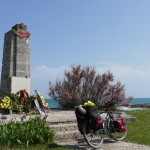
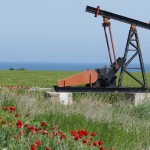
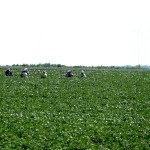
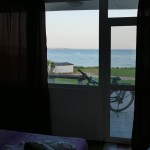
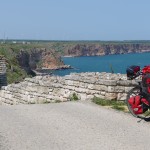
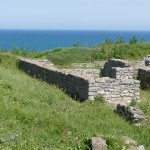
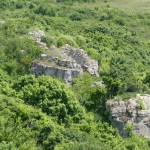
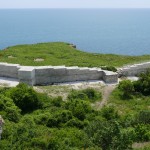
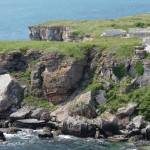
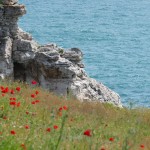
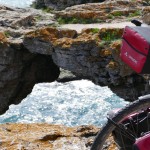
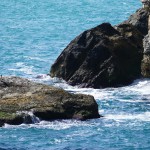
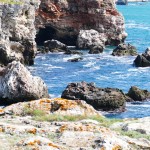
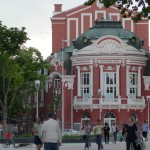
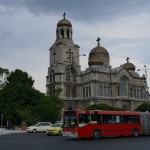
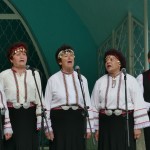
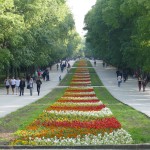
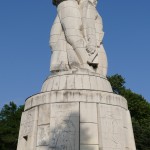
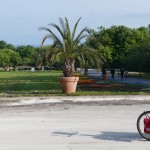
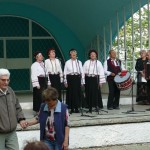

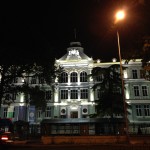
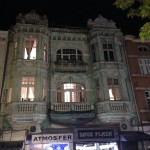
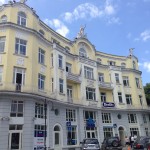
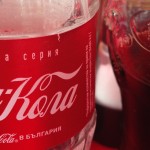
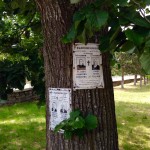
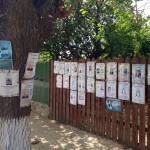
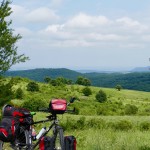
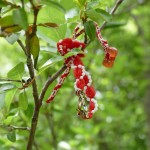
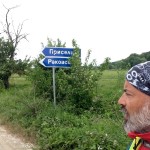
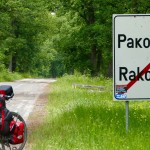
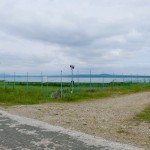
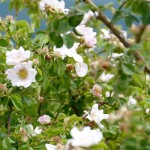
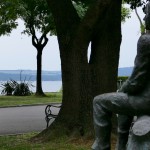
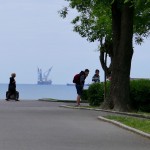
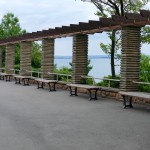
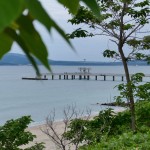
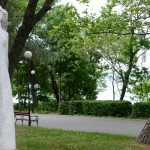
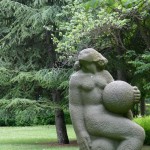
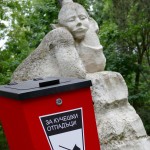
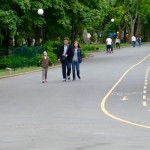
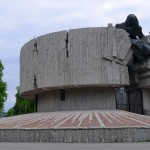
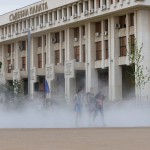
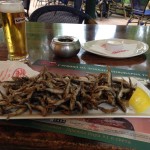
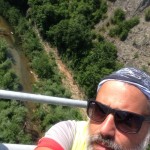
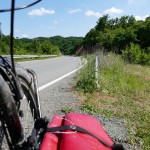
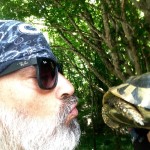
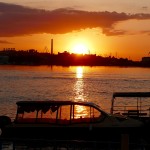
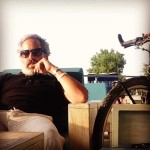
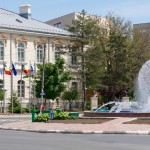
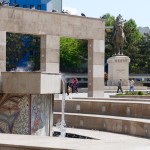
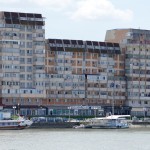
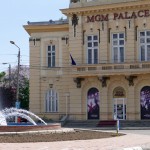
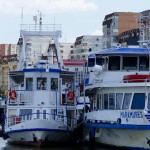
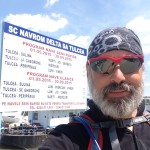
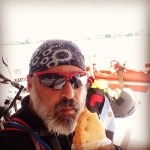
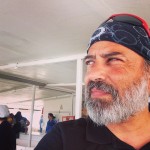
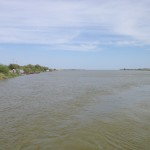
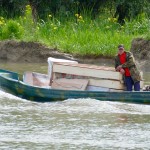
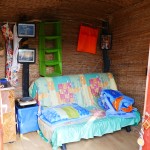
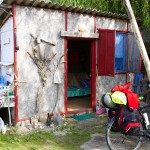
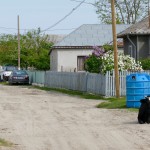
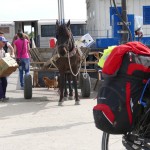
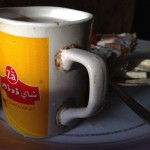
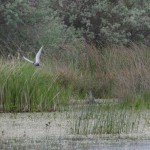

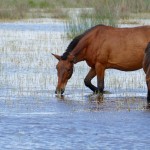
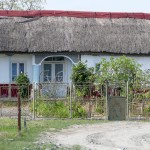
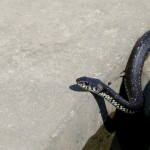
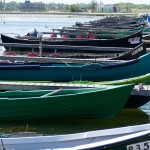
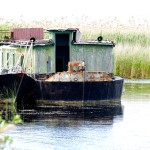
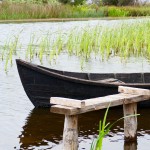
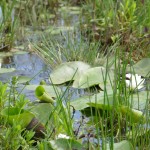
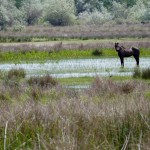
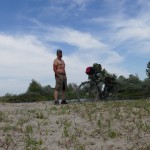
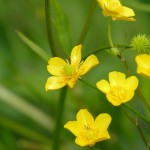
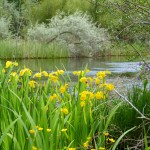
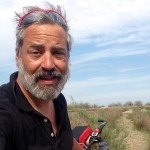
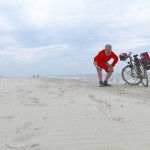
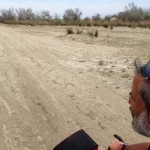
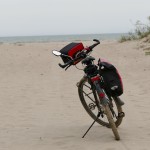
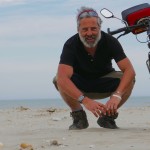
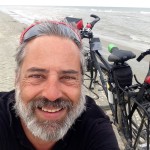
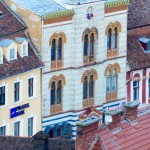
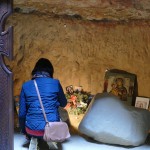
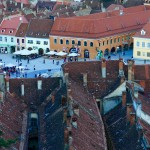
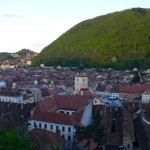
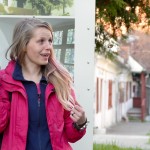
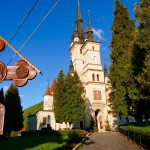
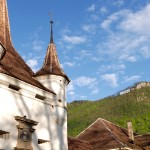
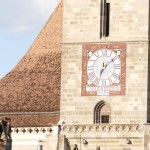
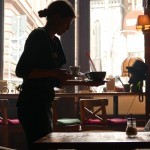
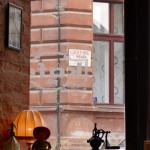
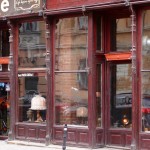
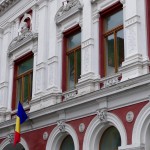
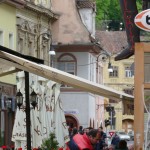
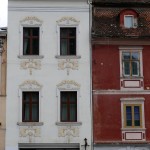
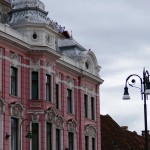

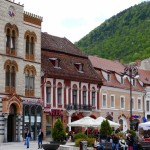
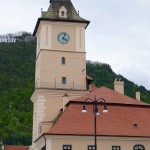
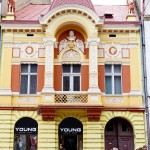
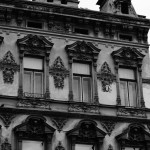
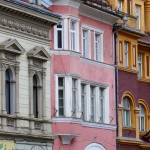
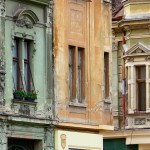
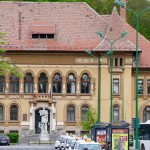
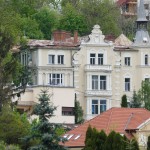
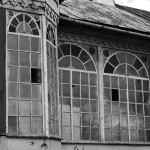
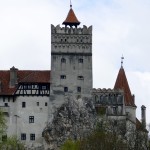
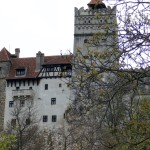
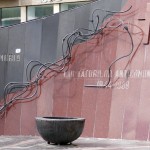
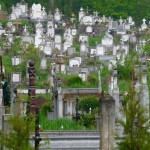
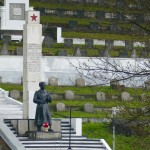

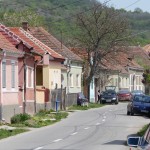
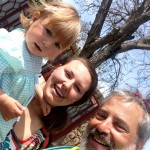
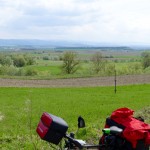
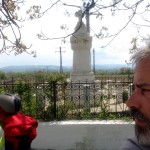
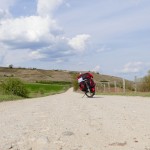
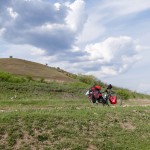
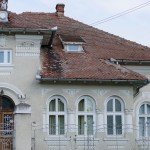
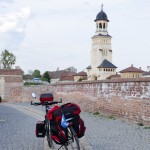
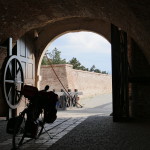
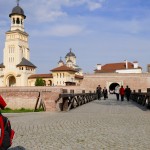
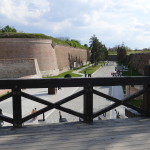
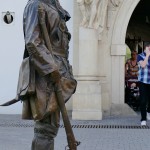
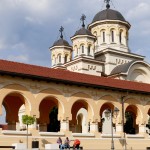
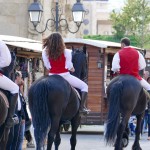
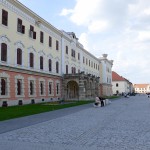
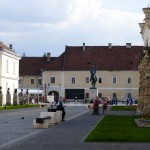
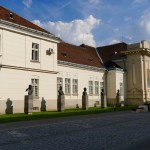
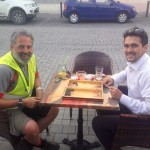
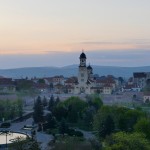
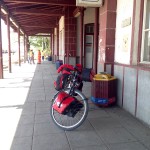
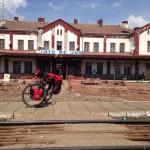
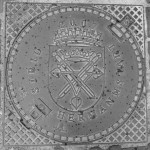
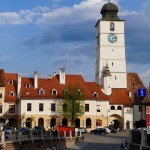
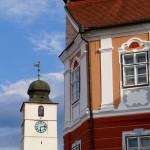
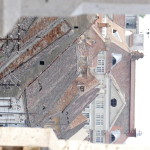
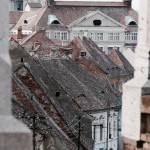
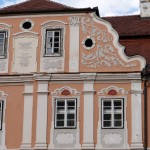
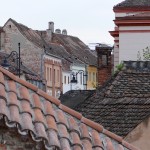
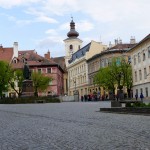
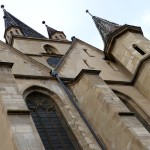
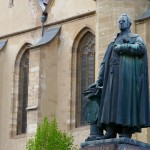
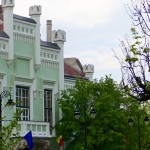
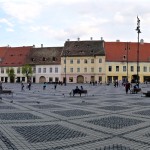
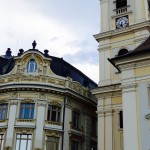
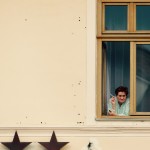
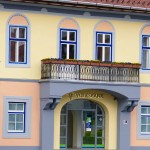
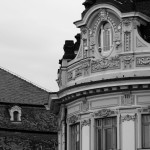
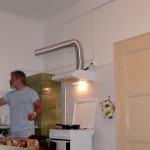
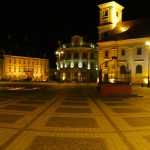
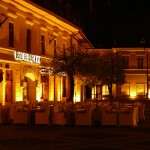
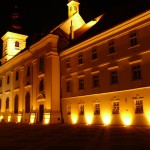
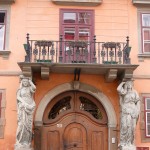
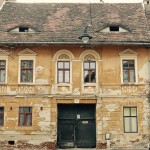
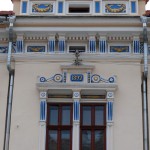
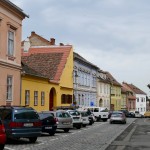
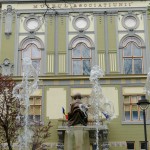
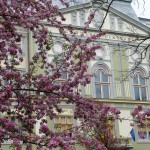
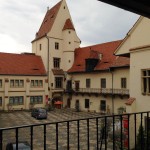
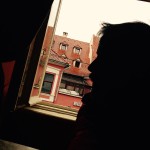
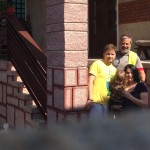
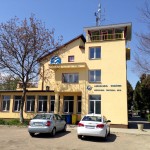
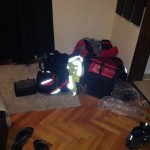
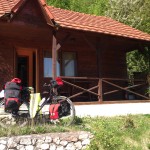
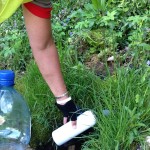
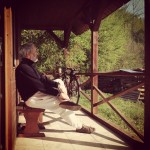
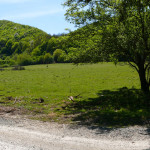
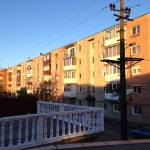
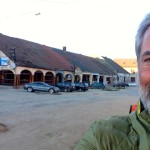
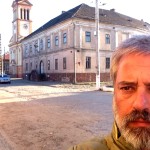
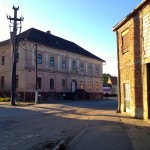
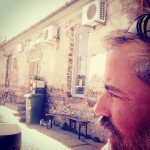
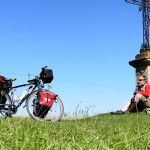
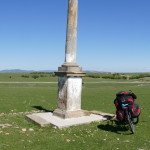
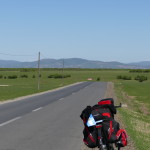
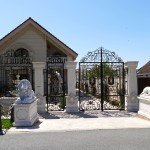
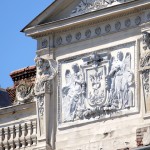
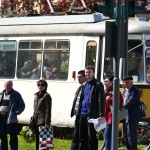
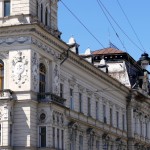
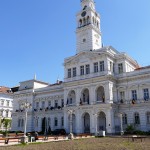
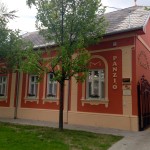
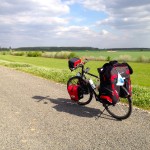
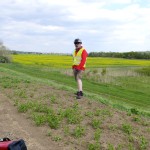
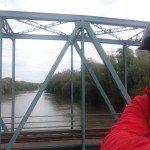
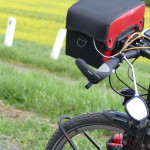
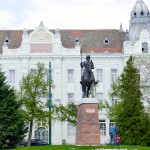
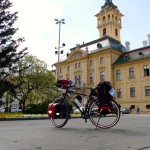
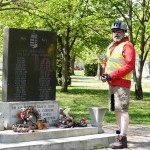
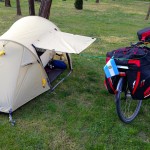
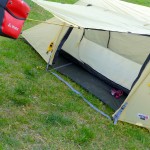

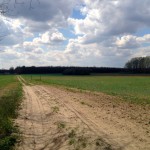
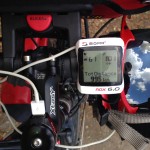
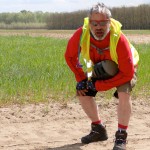
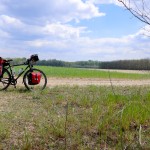
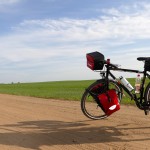
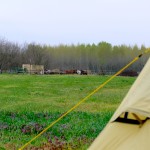
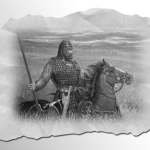
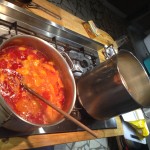
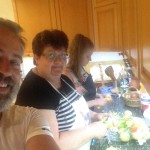
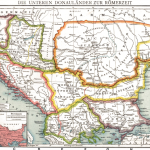
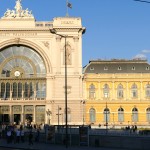
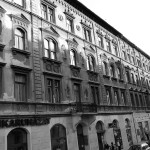
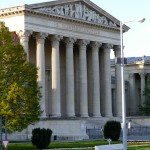
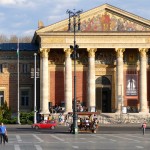
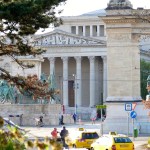
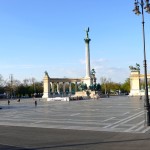
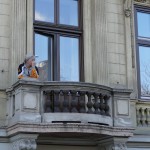
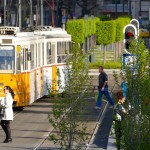
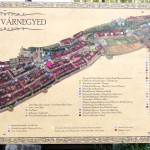
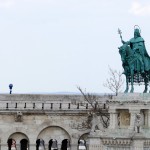
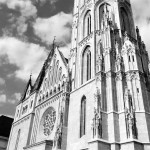
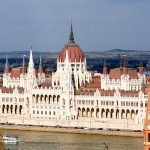
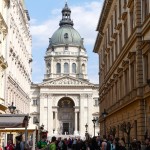
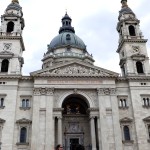
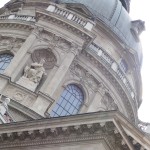
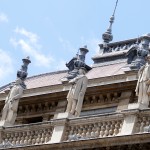
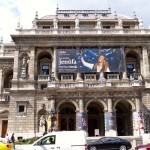
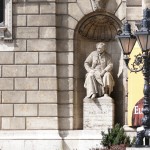
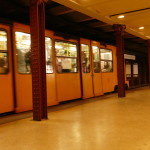
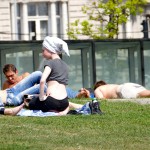
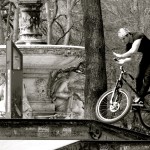
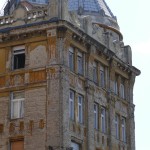
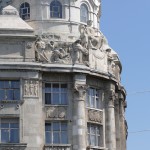
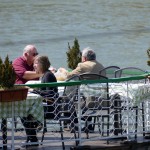
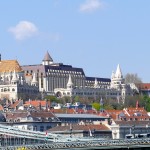
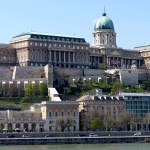
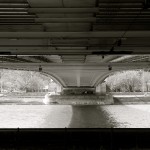
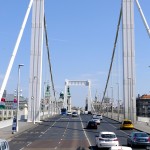
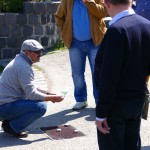
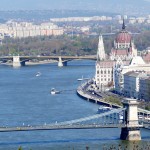
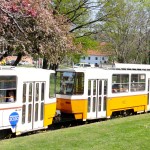
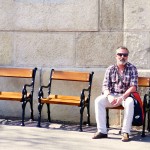
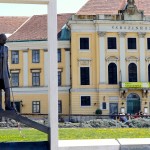
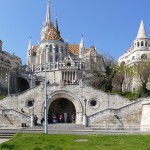
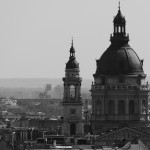
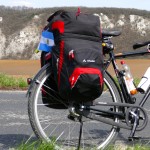
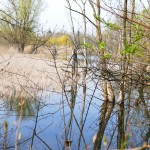
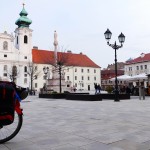
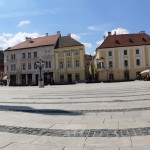
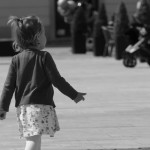
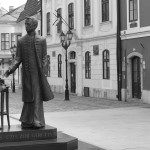
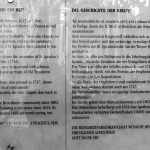
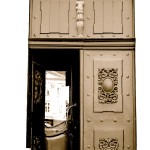
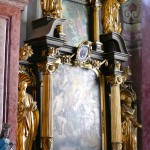
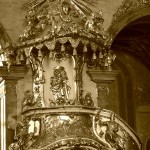
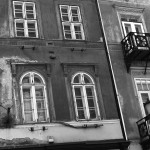
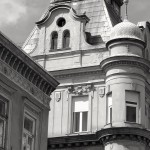
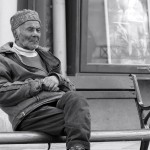
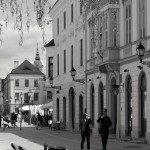
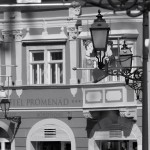
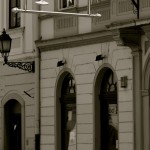
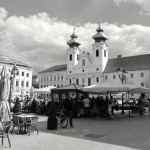
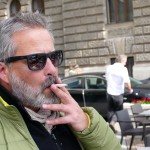
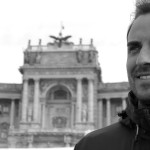
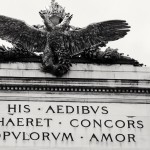
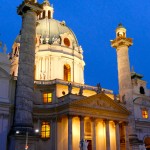

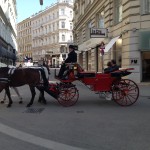
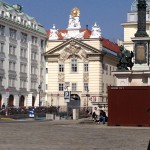
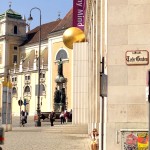
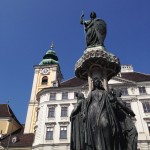
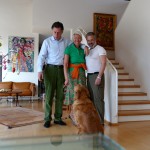
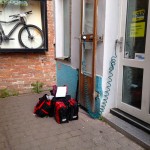

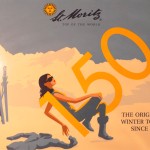
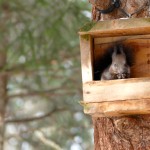
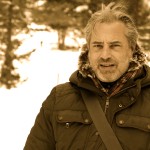
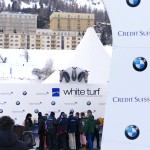
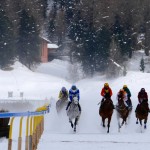
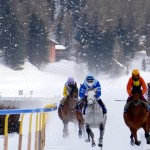
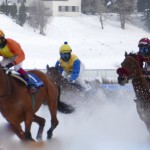
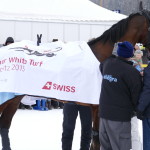
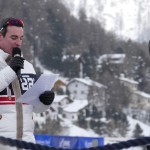
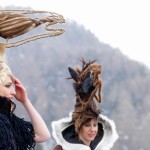
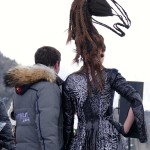
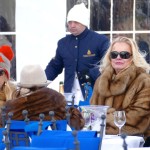

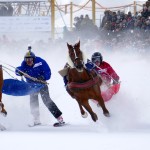
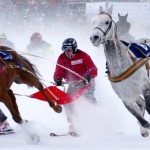
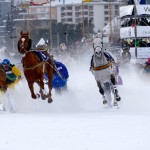
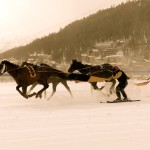
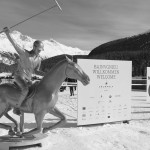
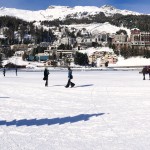
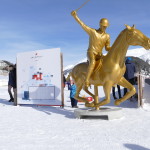
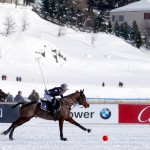
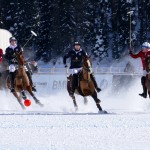
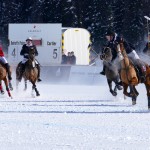
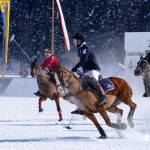
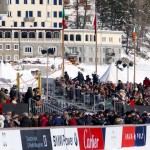
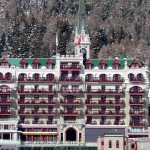
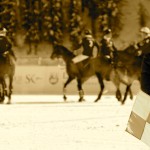
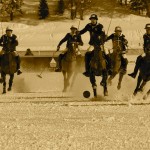
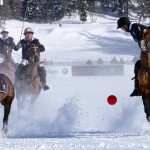
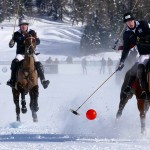
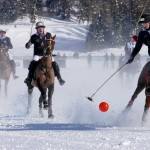
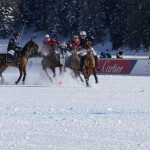
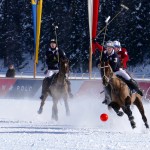
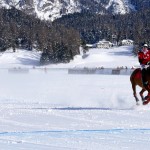
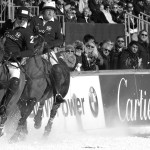
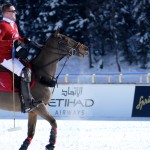
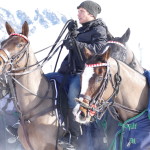
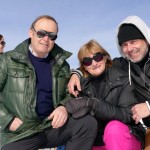
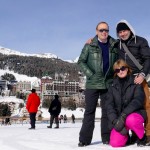
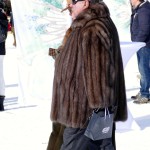
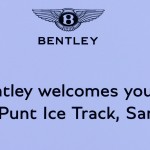
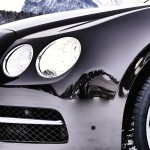

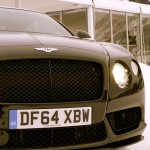
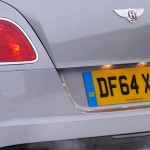

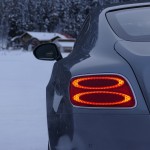







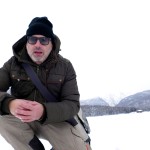


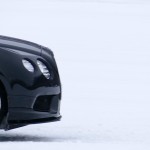
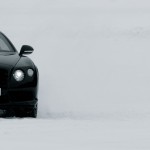

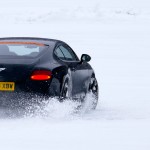






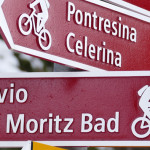
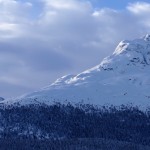
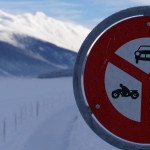
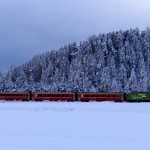
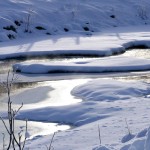
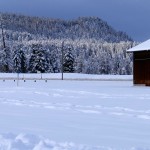
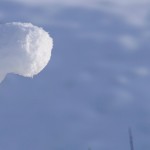
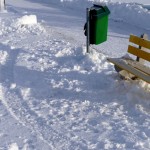


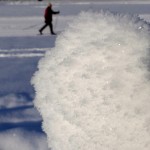
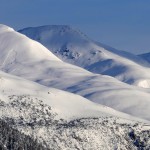
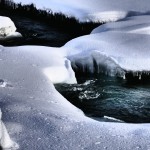
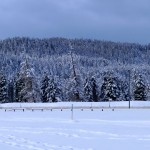
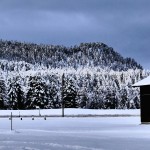
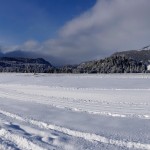
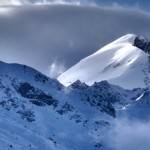

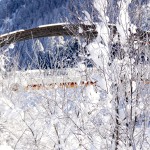
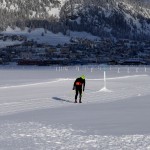
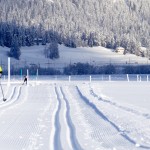
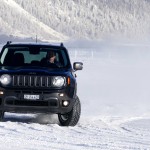


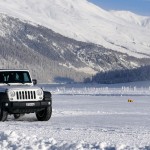
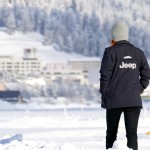
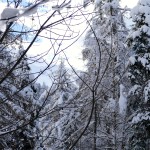
Bitte hinterlasse eine Antwort